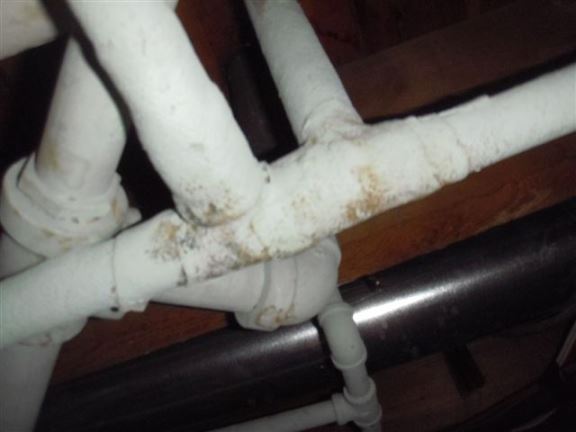

(iii) plumbing system, including from, within or around any shower stall, shower bath, tub installation, or other plumbing fixture, including their walls, ceilings, or floors. (i) heating, air conditioning, or automatic fire protective sprinkler system (9) seepage or leakage of water, steam, or sewage that occurs or develops over a period of time: (8) water or sewage below the surface of the ground, including water or sewage that exerts pressure on, or seeps or leaks through a building structure, sidewalk, driveway, swimming pool, or other structure (7) water or sewage from outside the residence premises plumbing system that enters through sewers or drains, or water or sewage that enters into and overflows from within a sump pump, sump pump well, or any other system designed to remove sub- surface water that is drained from the foundation area (6) spray or surge from any of the items (1) through (5) described above, all whether driven by wind or not (5) overflow of any body of water (including any release, escape, or rising of any body of water, or any water held, contained, controlled, or diverted by a dam, levee, dike, or any type of water containment, diversion, or flood control device) (3) waves (including tidal wave, tsunami, and seiche) This does not include water solely caused by the release of water from a swimming pool, spigot, sprinkler system, hose, or hydrant

Burst pipes that are behind a wall or under a sink, or a pipe such as the one to your clothes washer.Water damage usually covered by home insurance Homeowners insurance covers certain types of water damage. The average insurance claim for water or freezing damage is $10,234, according to the latest data from the Insurance Information Institute. Water damage (along with damage from freezing) is the third most costly type of home insurance claim and makes up almost 20% of home insurance property damage claims, according to the Insurance Information Institute.


 0 kommentar(er)
0 kommentar(er)
